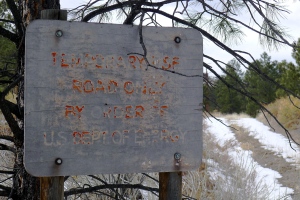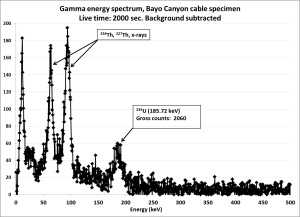 A crisis has been mounting at the Fukushima-1 nuclear power plant ever since the “Sendai earthquake” and tsunami of March 11 disabled multiple cooling and backup power systems at the six-unit BWR facility. Efforts of a skeleton operating crew are ongoing to cool the beleaguered reactors and their onsite spent fuel inventory. Hopefully these workers, widely hailed as heroes, will avert a wider release of radioactive material. (Tokyo Electric Power Company image, left, shows damaged reactor buildings 3 and 4 on March 15).
A crisis has been mounting at the Fukushima-1 nuclear power plant ever since the “Sendai earthquake” and tsunami of March 11 disabled multiple cooling and backup power systems at the six-unit BWR facility. Efforts of a skeleton operating crew are ongoing to cool the beleaguered reactors and their onsite spent fuel inventory. Hopefully these workers, widely hailed as heroes, will avert a wider release of radioactive material. (Tokyo Electric Power Company image, left, shows damaged reactor buildings 3 and 4 on March 15).
I am not in a position to opine on what this accident means for the future of nuclear energy, for the political fortunes of the camps aligned for or against it, or for the risk assessment methodology, regulatory framework, engineering practices, etc. that lay the foundation for safety in this business. (For all that, stay tuned to network television, where at least one “rodeo clown” possessed of a high-school diploma and a chalkboard is on duty in front of the cameras.) Where I think I can be helpful is in recommending and uploading a few sources of eminently credible information.
- First, for info on the status of the accident, the UN’s IAEA updates a staff report regularly with expert-prepared announcements free of sensationalism and technical misinterpretation.
- Second, for general info on the power plant systems involved in this accident, I recommend reading the US Nuclear Regulatory Commission’s BWR section of their Reactor Concepts Manual. (Page 3-16, for example, has an excellent cutaway image of the GE Mark-1 containment involved in this accident.)
- Third, some radiological doserate information from cities across Japan, March 14 – 15, was sent to me by colleagues in Tokyo. I’m grateful to Dr. Ryo Fujii, Cancer Intelligence Care Systems Inc., Tokyo, for this document. It is in Japanese, so I recommend Google Translate for non-Japanese-speakers. Among the highest readings: 1.318 μGy / hr (0.1318 mrad / hr, about 20-40 times local background), was measured in Utsonomiya, Tochigi Prefecture on March 15. At a site in Tokai, Ibaraki Prefecture (approximately 130 km SSW of the power plant), doserate spiked in the morning on 3/15 to around 5.8 μSv / hr (0.58 mrem / hr).
- UPDATE, 4:20PM MDT March 17: Detailed dosimetric information from near the power plant, released by the Japanese Ministry of Education, Culture, Sport, Science and Technology (MEST), shows highest radiation levels (about 80 μSv / hr or 8 mrem / hr) to the WNW, 20-30 km from the station (no points within the 20-km exclusion zone are sampled).
- UPDATE, 12:38AM MDT March 18: More dosimetric information from the Fukushima vicinity has been released. Note increases and rates as high as 17 mrem / hr outside the expanded 30-km exclusion zone.
- UPDATE, 10:20AM MDT March 21: New dosimetric information shows radiation levels generally falling in the Fukushima vicinity. Additional sampling points have been added within the 30-km zone. The Japanese government has released some contamination estimates throughout the country, showing levels of I-131 contamination as high as 93 GBq (2.7 Ci) / sq. km in Ibaraki Prefecture. Levels of I-131 and Cs-137 in drinking water are also reported.
- What’s in the fallout? Isotopic composition of the fallout would be a valuable key to understanding the process that is releasing contamination, and gamma spectrometry is a straightforward technique to measure this. However, I can find NO public spectra as of March 18. As Nature learned, the Comprehensive Test Ban Treaty Organization has had such information for a while but is not making it public. I will opine for a moment to say that the lack of openness from CTBTO, its members, and Japan in particular regarding fallout gamma spectra is a disgrace. UPDATE, 10:20AM MDT March 21: UC-Berkeley’s Nuclear Engineering Department publishes HPGe gamma spectra of fallout in their local rainwater. Contents include I-131, Cs-134, Cs-137, Te-132, and its daughter I-132. I-131 and Te-132 are short-lived nuclides that would have been generated by recent fission.
Finally, though my outpost here on the ‘net is probably mostly known to a niche audience with a like-minded interest in playing with radiation and collecting radioactive material, I am sobered at the thought of the human suffering brought on by the terrible circumstances unfolding in Japan—psychological terror, physical injury, shattered faith. I wish I could do more to help.





















